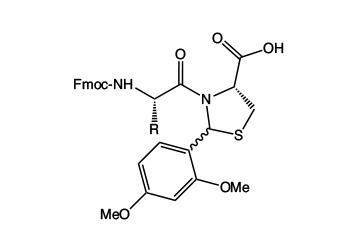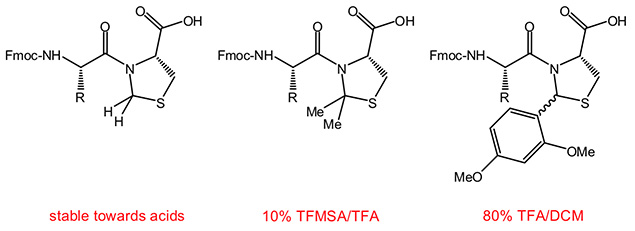Welcome to Iris Biotech
For better service please confirm your country and language we detected.

For better service please confirm your country and language we detected.

Thank you very much for your interest in our products. All prices listed on our website are ex-works, Germany, and may attract customs duties when imported.
You may/will be contacted by the shipping company for additional documentation that may be required by the US Customs for clearance.
We offer you the convenience of buying through a local partner, Peptide Solutions LLC who can import the shipment as well as prepay the customs duties and brokerage on your behalf and provide the convenience of a domestic sale.
Continue to Iris Biotech GmbHSend request to US distributorPublished on 03.03.2015

Pseudoprolines derived from Serine and Threonine have developed to standard building blocks for peptide synthesis since their invention by Mutter in 1996. They disrupt aggregation, reduce aspartimide formation and thus help improving yield in peptide synthesis of difficult and long sequences. In the invention paper also Cysteine based derivatives have been described, but never employed as building blocks so far.
➔ Serine and Threonine based Pseudoprolines are available now for reduced price!
➔ New: Cysteine based Pseudoprolines:
Now this technology is also available with Cysteine residues, as the corresponding 2,4-dimethoxyphenyl-pseudothiaproline is compatible with standard Fmoc/tBu protocols.

Cysteine based pseudoprolines are more stable than the corresponding oxazolidines of Serine and Threonine. Depending on the residues they are stable towards acid treatment or can be cleaved in standard Fmoc/tBu protocols with high concentration of TFA in DCM. We offer both dimethyl and 2,4-dimethoxyphenyl thioprolines to give the synthetic chemist the choice for different kinds of applications.